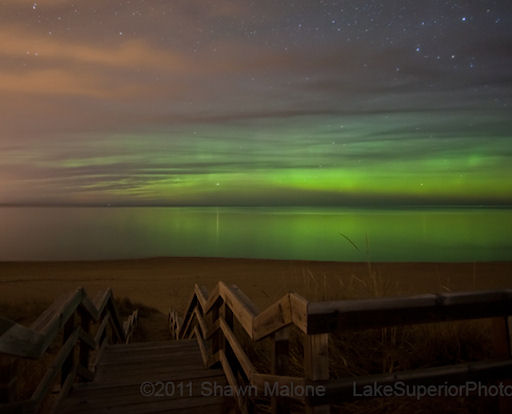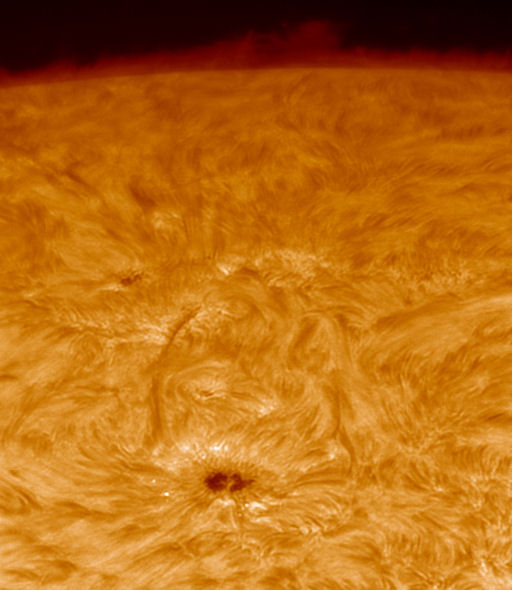Metallic photos of the sun by renowned photographer Greg Piepol bring together the best of art and science. Buy one or a whole set. They make a stellar gift. | | |
VOYAGER'S SURPRISING MESSAGE TO E.T.: NASA's Voyager probes are at the edge of the solar system carrying a message to possible extraterrestrial civilizations. Highlights include greetings from humans and whales, some of Earth's greatest music, and the brainwaves of a young woman in love. Get the full story from Science@NASA.
GEOMAGNETIC STORM: A solar wind stream hit Earth's magnetic field during the early hours of April 30th, sparking a high-latitude geomagnetic storm (slowly subsiding). In the United States, auroras descended as far south as Marquette, Michigan, where Shawn Malone took this picture before sunrise:

"High humidity and clouds dampened the light a bit, but the green liights were still bright enough to reflect off the waters of Lake Superior," says Malone.
High-latitude sky watchers should remain alert for auroras. The solar wind speed is high and gusty, and NOAA forecasters estimate a 40% chance of more geomagnetic activity during the next 24 hours. Aurora alerts: phone, text.
more images: from Olivier Du Tre of Cochrane, Alberta, Canada; from Zoltan Kenwell of Edmonton, Alberta, Canada; from Steve Milner of Ft St John, British Columbia, Canada; from Paul Klauninger of Ottawa, Ontario, Canada; from Yasser Maghsoudi of Chochrane, Alberta, Canada
April 2011 Aurora Gallery
[previous Aprils: 2010, 2009, 2008, 2007, 2006, 2005, 2004, 2003, 2002]
QUIET BEAUTY: New sunspot 1203 is not producing many flares, but it is photogenic anyway. Sebastien Kersten sends this snapshot from his backyard observatory in De Haan, Belgium:

"Incredible!" says Kersten, who took the picture using an H-alpha filter tuned to the red glow of solar hydrogen. "The sunspot had a strong 3D appearance when viewed through the eyepiece of my Coronado SM140 solar telescope."
The sunspot is dragging a pair of magnetic filaments behind it, each measuring about 50,000 km from core to tail. If these filaments criss-cross or become unstable and collapse, this region might produce a flare after all. Monitoring is encouraged.

